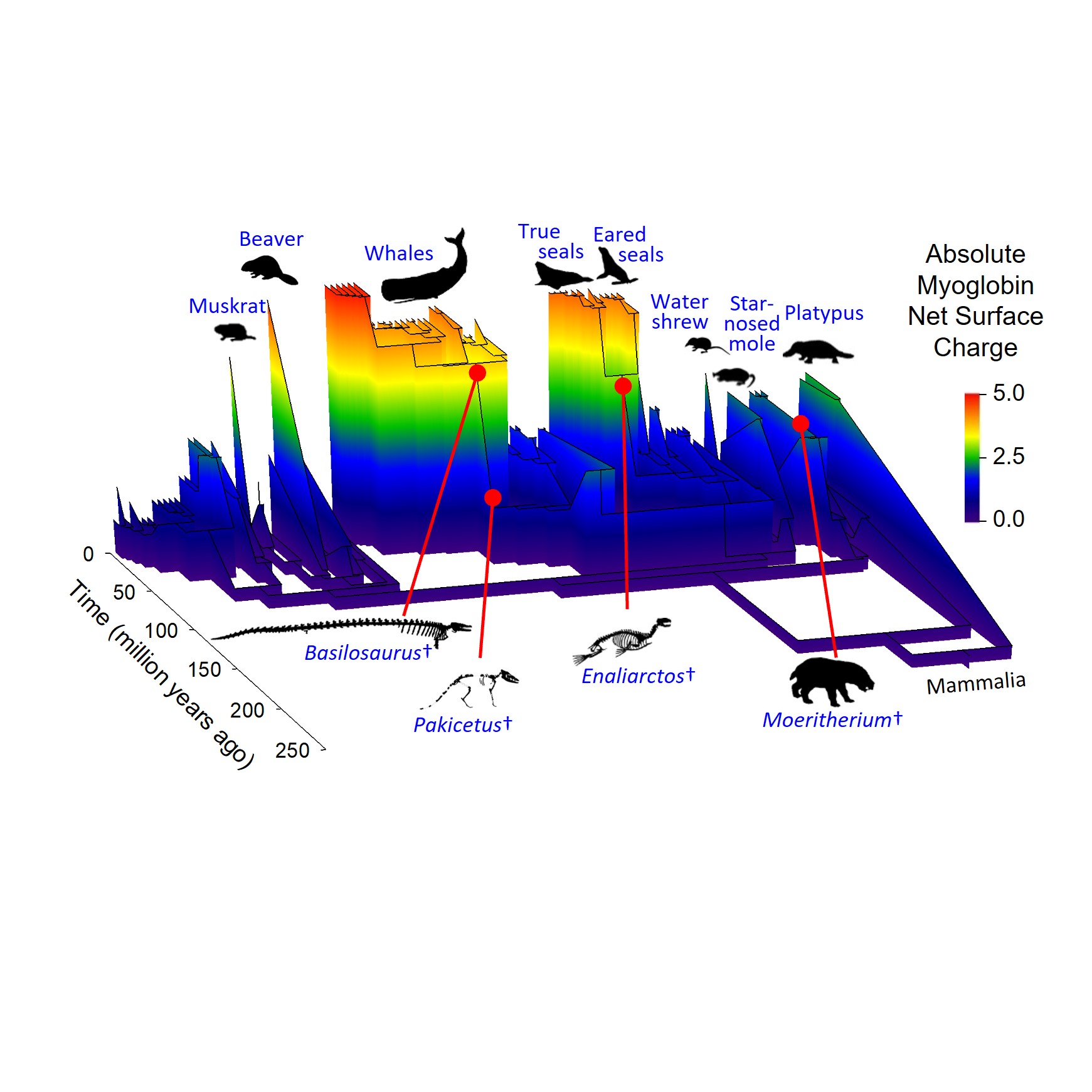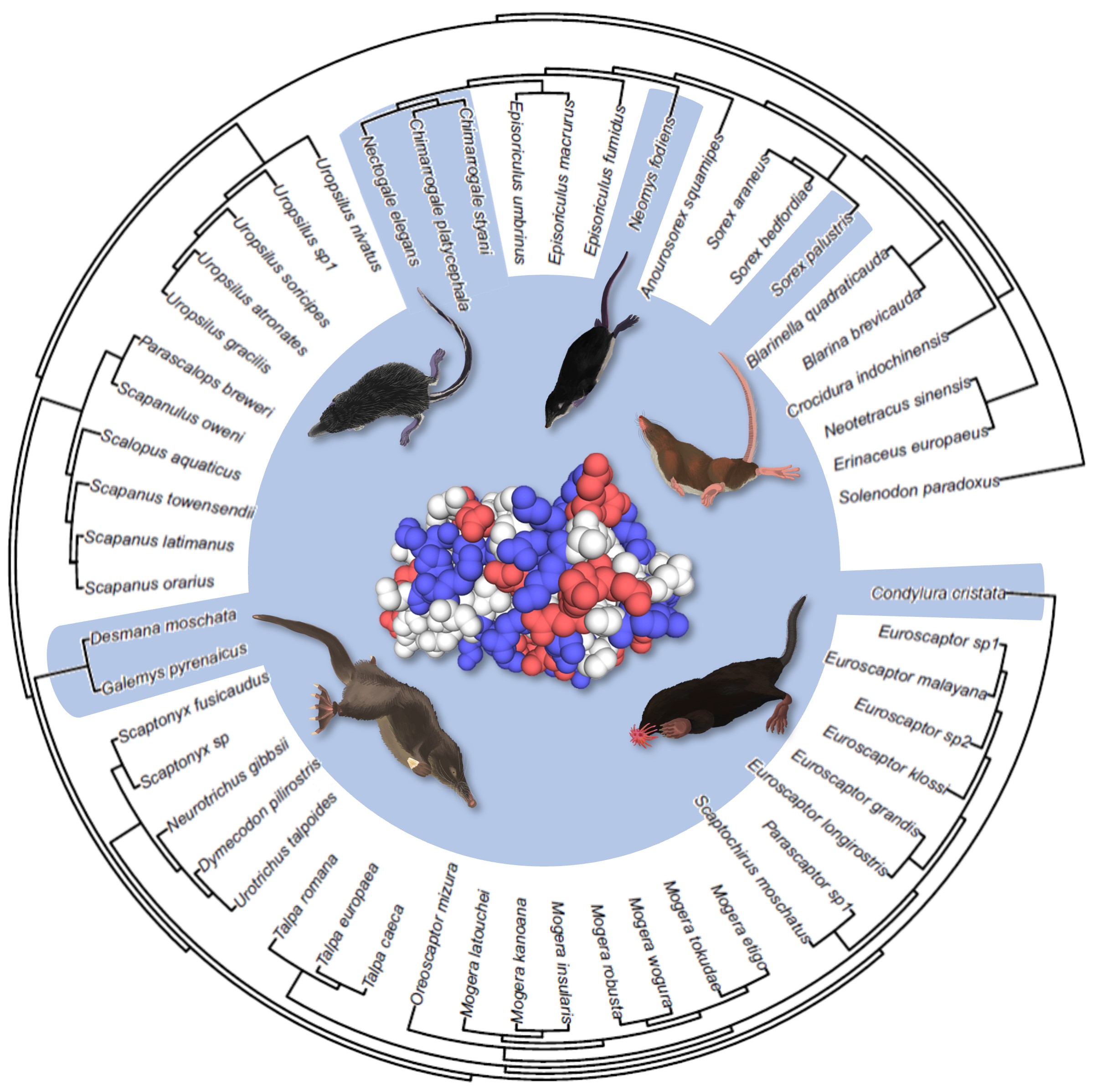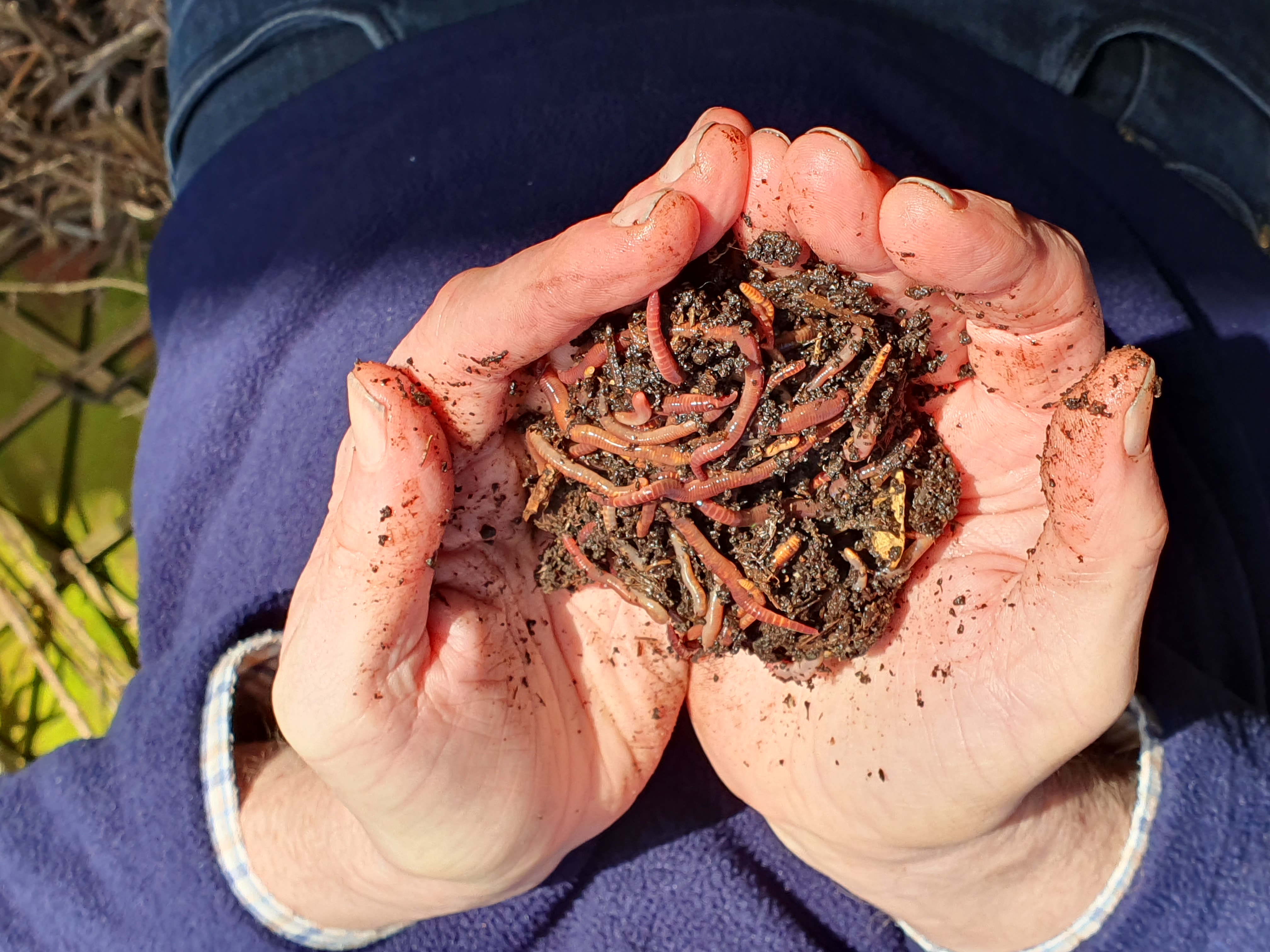Research
Michael Berenbrink is interested in the diversity of physiological mechanisms that animals employ in different environments or with different life-styles. The focus of his work is on the respiratory system of vertebrates, particularly the evolution of blood oxygen and carbon dioxide transport mechanisms and haemoglobin function.

Physiological Genomics of Adaptive Blood Respiratory Gas Transport Mechanisms
Uptake of oxygen and release of carbon dioxide and their efficient transport through the body are central to supporting life in complex organisms. Hence conditions impairing tissue oxygen supply, such as heart and lung disease and stroke, are among the leading causes of human death. However, vertebrates have evolved a wide array of blood respiratory gas transport mechanisms that support high metabolic rates in challenging environmental conditions. Yet, the molecular genetic underpinnings of adaptive oxygen transport mechanisms are poorly understood, despite their importance for (1) discovering targets for intervention in human and animal disease, (2) improving aquaculture and food security, and (3) adaptation to aquatic deoxygenation induced by climate-change.
Our research uses comparative analyses of physiological mechanisms to understand how vertebrates -from fishes to birds and mammals- to adapt to energetic lifestyles even in oxygen poor environments.
This approach allowed us to trace the evolution of superior diving ability across several diverse groups of mammals, from tiny water shrews to seals and the largest whales, and even giant extinct sea cows.BBC News - Science and Environment - video with Dr Michael Berenbrink
We have also discovered the molecular mechanism by which certain fish species such as goldfish can survive for prolonged periods even without any oxygen by producing alcohol as a metabolic end product.The Naked Scientists - Interview with Dr Michael Berenbrink
Our work frequently captures the imagination of the general public and is featured in international media, aiding in the public understanding of science. It is interdisciplinary in nature, combining physiological insights with genomic and structural analyses. This makes it particularly suitable for doctoral research, with both examples given above resulting from the work of PhD students

Physiological Adaptations to Diving in Small Mammals
Small mammals have increased tissue oxygen needs and loose heat more quickly than larger mammals, which should make it much more difficult for species like water shrews to evolve an underwater diving lifestyle.
We have discovered a molecular mechanism that allows much higher concentrations of the oxygen-storing protein myoglobin in the muscles of mammals. By studying the genetic footprint of this mechanism in a large number of mammal species, we have revealed that no less than 5 groups of small, insect-eating mammals have independently evolved the ability for a semi-aquatic lifestyle. BBC News - Science and Environment

Sink or swim – does climate change-related flooding threaten the UK’s earthworm populations?
We are now also working on invertebrate oxygen transport systems, namely earthworm haemoglobin, in a collaboration with Prof. Mark Hodson from the University of York.
Earthworms are widely recognised as being beneficial to soil and ecosystems and are valued by gardeners and farmers alike. They can boost plant growth by up to 30% and may be responsible for 6.5% of global grain production. However, all is not rosy in the garden for earthworms. Our new project will investigate whether the increases in intensity, frequency and extent of flooding across the UK due to climate change will likely put these vitally important organisms at risk.
Earthworms breathe oxygen, just like us, but unlike us, they have no lungs; they ‘breathe’ across their skin. Once taken into their bodies, oxygen is transported by a giant version of the same protein that does this job in humans, haemoglobin. Earthworms can survive in water provided it contains enough oxygen; however, flooded soils can become oxygen-depleted within hours, and earthworms drown. We recently showed that the lowest oxygen concentrations at which earthworms can survive vary between species, but we do not know why. Is it because of differences in their haemoglobin? Or their ability to reduce their metabolism and hence oxygen demand to a minimum? As different species of earthworms affect soil properties differently, changes in earthworm communities due to variable survival in flooded soils could, in turn, impact soil health and food production.
But earthworms won’t just wait in the soil as the flood waters rise. Earthworms are sensitive to soil moisture content; as soils become wetter, they could move away to drier soil. So we will also investigate how wet a soil has to get before earthworms start moving to more favourable conditions and whether they can move fast enough to outpace the flood waters. If the worst happens and the earthworms drown, their cocoons (encased eggs) will still be in the soil. Once the flood waters recede, the cocoons could hatch, replenishing the earthworm population. Our study will, therefore, also determine whether reductions in soil oxygen concentrations during flooding damage the cocoons and reduce their hatching rate. Finally, we will use climate change models to predict changes in the frequency and duration of flooding in the UK over the next 50 to 100 years.
We will integrate the new knowledge generated by our project to produce earthworm flood risk maps that show the vulnerability of our all-important earthworm populations to climate change-driven changes in flood extent, frequency, and duration.
Research grants
Sink or swim – threats to earthworm diversity due to flooding
LEVERHULME TRUST (UK)
September 2024 - August 2026
Temperature sensitivity of oxygen transport in Atlantic cod
CENTRE FOR ENVIRONMENT, FISHERIES & AQUACULTURE SCIENCE (UK)
October 2011 - September 2015
Evolution of stress activated Na+, K+, Cl- cotransport in bird red blood cells.
BIOTECHNOLOGY & BIOLOGICAL SCIENCE RESEARCH COUNCIL
March 2006 - May 2009
7th International Congress of Comparative Physiology and Biochemistry - ICCPB
ROYAL SOCIETY (CHARITABLE)
August 2007
Convergent Evolution of Integrated Systems: Vertebrate Haemoglobins, their Intracellular Environment and Whole Animal Function.
BIOTECHNOLOGY & BIOLOGICAL SCIENCE RESEARCH COUNCIL
February 2003 - February 2006
Historical reconstructions of evolving physiological complexity
ROYAL SOCIETY (CHARITABLE)
September 2006
Research collaborations
Prof. Mark Hodson
University of York, U. K.
Sink or swim – does climate change-related flooding threaten the UK’s earthworm populations? Combining field sampling, laboratory experiments and computer modelling, soil scientist Mark Hodson, environmental physiologist Michael Berenbrink and hydrologists Megan Klaar and Tom Willis will assess the risks of increased flooding to earthworm communities that are all-important for healthy soils.
Prof. Jay F. Storz
University of Nebraska, Lincoln, U. S. A.
Evolutionary physiology of mammalian and avian respiratory proteins
Dr Kelly R. Ross
Evolutionary physiology of mammalian and avian respiratory proteins
Prof. Göran E. Nilsson
University of Oslo, Norway
Molecular mechanism of ethanol production and anoxia survival in cyprinid fishes
Prof. Mikko Nikinmaa
University of Turku, Finland
Mechanism of sensing molecular oxygen in fish red blood cells and regulation of oxygen-sensitive membrane ion transport
Prof. Kevin L. Campbell
University of Manitoba, Winnipeg, Canada
Evolutionary physiology of mammalian and avian respiratory proteins
Prof. David Atkinson
Integrative Approaches to Understanding Organismal Responses to Aquatic Deoxygenation and Climate Warming
Prof. Andrew R. Cossins
Applying analytical methods from Evolutionary Biology to Comparative Animal Physiology. Evolution of cold adaptation in vertebrates. Analysis of myoglobin function in non-muscle tissues. Fate of target genes after whole genome duplication events.